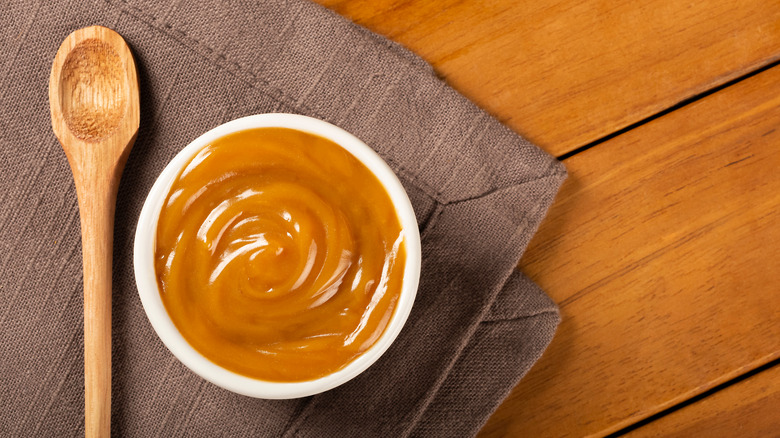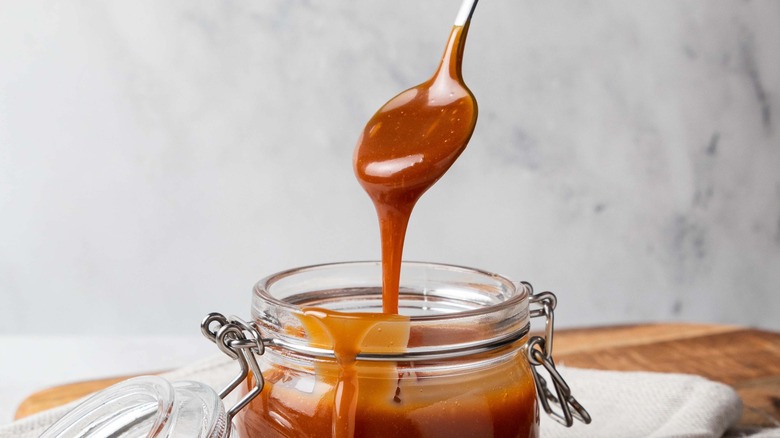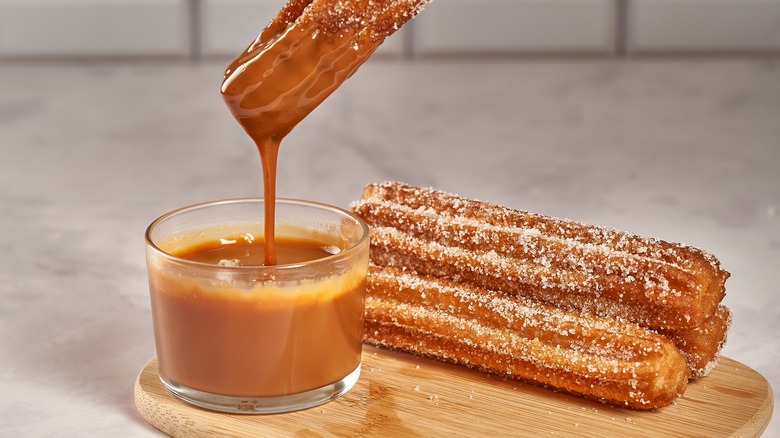What's The Difference Between Caramel And Dulce De Leche?
Once you get to know the sweet rich flavors of foods like caramel and dulce de leche, you'll want to put them in everything. Thankfully, that's not that hard to do. Both of these sweet treats are easily spread or added to a variety of dishes like the quirkily named Hurry-up Caramel Cake. You can also just add a scoop of either of them to your morning cup of joe for an easy coffee upgrade. Or spread some around the inside of the mug before you pour in some hot chocolate for an indulgent treat in the colder months.
Sally's Baking Addiction adds that once you master making your own caramel you can use it in a seemingly endless number of dessert options. Food & Wine adds that dulce de leche is just as versatile. In fact, these two spreadable brown sweets seem to have a lot in common. Make no mistake though, there are several differences between these incredibly versatile ingredients.
What is caramel?
The more common ingredient of this pair is likely going to be caramel. A part of that is cultural, but another reason for that is the simplicity of caramel. Puerto La Boca says that caramel is essentially just cooked sugar. You can also add ingredients like water, butter, and even cream (per Land O' Lakes) to adjust the consistency and color of your caramel.
Broma Bakery adds that this is also the reason why salt is often paired with caramel. Because it's made up entirely of caramelized sugar, it can have an almost overwhelming sweetness to it if there isn't some salt present in the recipe to cut through.
Southern Kitchen points out that despite its reputation as being purely sweet, caramel can have a lot of complexity as well. Caramel is the result of sugar undergoing the Maillard reaction in which simple sugars undergo a series of chemical reactions. The more they're cooked, the more complex the flavors of the sugar. This also adds to caramel's versatility by allowing for darker and more bitter notes to be added to the end result.
What is dulce de leche?
The main difference between these two sweets should be clear to anyone that speaks Spanish. According to Puerto La Boca, dulce de leche translates to "sweet milk." this makes milk the defining characteristic of this confection. While you can add milk, cream, or other dairies to caramel, dulce de leche is defined by the presence of milk in the recipe.
Southern Living points out that this affects the flavor of dulce de leche as well. Both treats get their flavors from the process of caramelization, but while making caramel is only altering the structure of the sugars before other ingredients are added, milk is present the entire time when making dulce de leche. The ingredients are all mixed together before cooking, or sweetened condensed milk is used instead to simplify the process. While the milk cooks, its own proteins will alter and develop a deep, nutty flavor that won't be equally present in caramel.
So, while you can't go wrong with either of these ingredients, they do have their own unique flavors thanks to the process of caramelization. Dulce de leche will often be creamier depending on how long it's cooked and will have more of a nutty flavor than a classic caramel.


